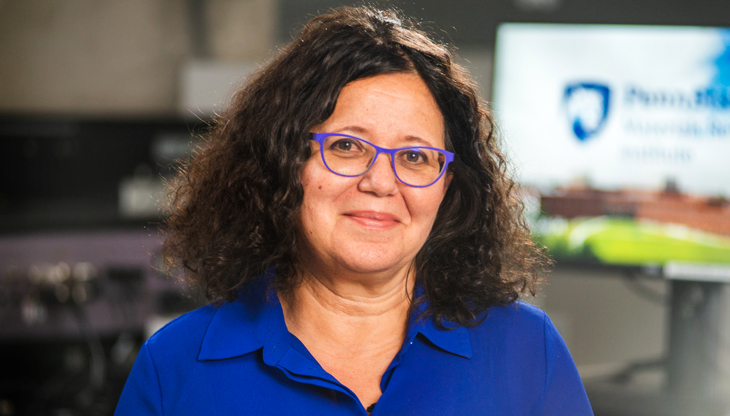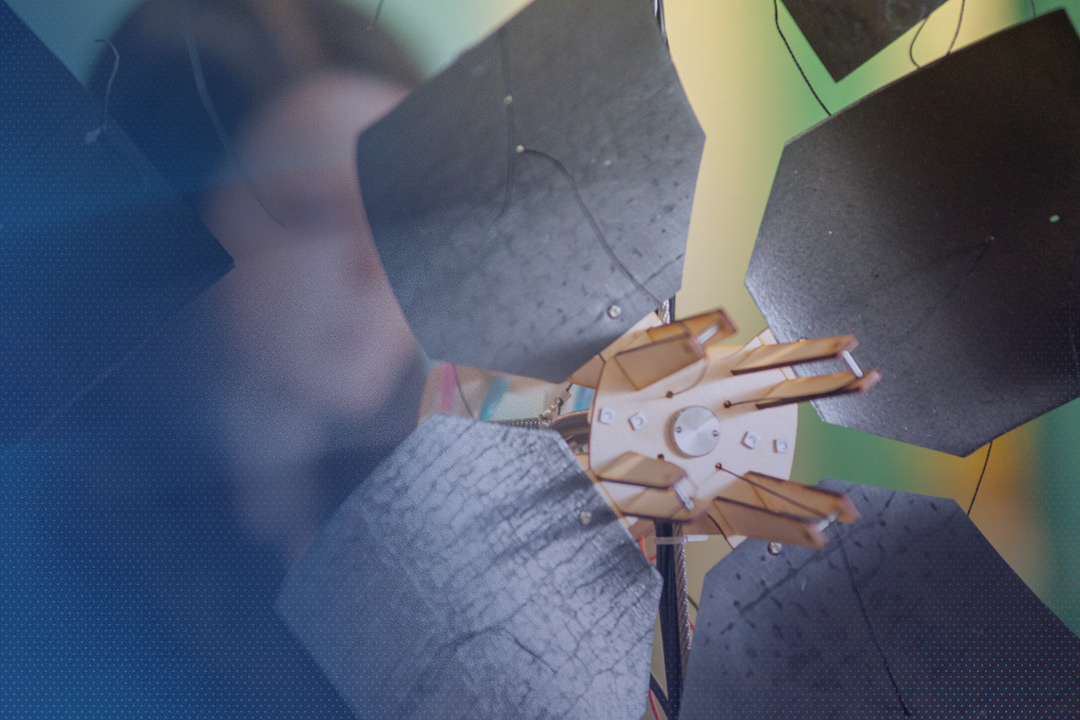The coming decades present a host of challenges for our built environments: a rising global population combined with increasing urbanization; crumbling infrastructure and dwindling resources to rebuild it; and the growing pressures of a changing climate, to name a few.
To become more livable for more people, smart materials will need to become smarter, with buildings, bridges, and infrastructure that are able to adapt and respond to what’s going on around them. If not exactly alive, these structures will need to be life-like, in important ways. And for that, they’ll need to incorporate living materials.
Advancing beyond smart materials, creating living materials are the next logical step. “Living materials are engineered materials inspired by nature; they adapt, respond to the environment, self-power, and regenerate, much the way materials in nature do,” says Penn State’s Zoubeida Ounaies.
“[In the future,] we could reduce the need for energy to be supplied to these multiple smart systems throughout a large building, for example, or even a residential home and replacing that by a material that now self-powers, potentially self-heals, self grows; not only self-powers, but harvests energy, and maybe we can use that to feed other aspects of what goes on in a home or a building,” says Ounaies.

Zoubeida Ounaies, director of the Convergence Center for Living Multifunctional Material Systems (LiMC2), professor of mechanical engineering, College of Engineering, associate director of the Materials Research Institute
“As a scientist and engineer, I am motivated by looking holistically at global issues like climate, poverty, and hunger. Ultimately, I’m motivated by the possibility of making things better, through collaboration with colleagues and students. That’s my everyday motivation.”
Designed to Adapt
Ounaies, a professor of mechanical engineering at Penn State, is director of the Convergence Center for Living Multifunctional Material Systems, a research partnership between Penn State and the University of Freiburg in Germany. Known as LiMC2, the center is one of only a handful in the world focused on this emerging field.
Ounaies’s counterpart at Freiburg is Jurgen Ruhe, director of the Cluster of Excellence in Living, Adaptive and Energy-autonomous Materials Systems (livMatS). Ruhe puts it this way: “If we look at the materials of today, one of the very key features is that materials have properties which do not vary in time. But if we turn our view to nature, nothing is really constant. For living systems, adaptivity is the key to survival. The goal of our livMatS cluster is to generate materials systems which can adapt to changes in the environment based on sensory input and then improve over their lifetime.”
Importantly, Ounaies says, living materials are multifunctional. They don’t just provide strength or elasticity or hardness: they reduce environmental impacts and promote health; they monitor their own status, and when used up, they can be recycled or reabsorbed. They harvest energy from their surroundings, store it, and use it for what they need. They do these things, ideally, while self-powering and without external sensors or motors.
“Wouldn’t it be wonderful if all materials, including these walls around us, the doors, the tables, were capable of more than one thing? The door is there to protect, and we open it. What if the door also was a speaker? What if the door was also the screen of a computer? What if these walls had the ability to control the climate of the room without needing the ducts and the heating and cooling system that is housed somewhere else in this building?” imagines Ounaies.
Living materials are engineered materials, inspired by nature. Their dynamic properties enable them to adapt to changes in their environment, responding to external stimuli. They may change shape, heal themselves, and even make simple decisions.

A Team Effort
Engineering living materials requires a daunting combination of expertise in biology, materials, engineering, and design, to name a few. It’s exactly the sort of problem that Penn State’s interdisciplinary institutes were set up to solve. Penn State already had a strategic partnership with Freiburg, one of Germany’s top universities, and the two institutions had both overlapping and complementary strengths in the area of living materials. Working together, through both research collaborations and educational exchanges, they could become a worldwide leader.
Before the center even existed, Ounaies, whose research focuses on responsive soft materials for sensing, actuation, energy storage, and energy harvesting, was collaborating with Penn State architecture professor José Duarte and Ph.D. graduate Elena Vazquez, both in the College of Arts and Architecture. She says this kind of research could only happen at such an interdisciplinary institution as Penn State.
“There are many things that make Penn State unique and extremely strong in the materials community. The intellectual capacity around materials transcends colleges. It is an expertise that is found in multiple colleges and multiple campuses, in addition to the intellectual capacity and materials. At Penn State, an area like materials that thrives on collaboration is supported by our interdisciplinarity and access to world-class facilities.”
“If we expect more of our materials, our materials will deliver. The dream we’re working towards are materials that can help us achieve advances in multiple areas at the same time. Doing that responsibly means addressing the energy and climate crisis with our materials and not exasperating [the crises] through the extraction or manufacturing process.”
Building the Future
According to most estimates, building materials and operations account for over 30 percent of global carbon emissions. The goal of this research and development is that new construction material will be created that can work with the infrastructure that already exists today. We’re still a long way from the vision of adaptive architecture using living materials, Ounaies concedes. It will require many different types of expertise working together to get there.
While building the future of living materials, Ounaies is also building the future of researchers. Her motivation to build holistic materials also translates to her passion for building holistic partnerships.
“The people that have the most to gain from this [research] are our students. How lucky are they to be working in environments that are considering them as a holistic person? They are being trained to be aware of their responsibilities, as human beings who must address major social and global issues.”



